Blog by Steve Laug
 After brief foray into restoring a couple of other pipes I am back to Bob Kerr’s estate (his photo is to the left). If you have not “met” the man and would like to read a bit of the history of the pipeman, his daughter has written a great tribute that is worth a read. Because I have included it in over 60 restorations to date I thought that I would leave it out this time. Be sure to check out some of the recent Dunhill restoration blog (https://rebornpipes.com/2020/01/01/restoring-the-last-of-bob-kerrs-dunhills-a-1962-dunhill-bruyere-656-f-t-bent-billiard/).
After brief foray into restoring a couple of other pipes I am back to Bob Kerr’s estate (his photo is to the left). If you have not “met” the man and would like to read a bit of the history of the pipeman, his daughter has written a great tribute that is worth a read. Because I have included it in over 60 restorations to date I thought that I would leave it out this time. Be sure to check out some of the recent Dunhill restoration blog (https://rebornpipes.com/2020/01/01/restoring-the-last-of-bob-kerrs-dunhills-a-1962-dunhill-bruyere-656-f-t-bent-billiard/).
Bob Kerr seemed to enjoy collecting Canadian pipes as much as I do. He had quite a few Canadian made pipes including some nice older Brigham pipes and some specific pipes made by Peterson’s of Dublin for import into Canada. When I was cataloging Bob Kerr’s Estate and came across this pipe I examined it with a light and lens and could read the stamping. On the left side of the shank it read Leonard Payne in his characteristic looped signature. Under that it was stamped Original. On the right side of the shank it is stamped Made in Canada. The finish on the bowl was dirty but undamaged. There was some lava build up on the front edge of the rim top. There was darkening around the inner edge of the bowl and there was some damage on the inner edge. The bowl had a thick cake on the walls and there were shards of tobacco stuck in the cake. The stem was lightly oxidized and there was some tooth chatter on the top and underside of the button. The button end of the stem was quite unique. There was an airway coming out of either side of the stem and a round slot in the end of the button. Jeff took photos of the pipe before he started the cleanup work.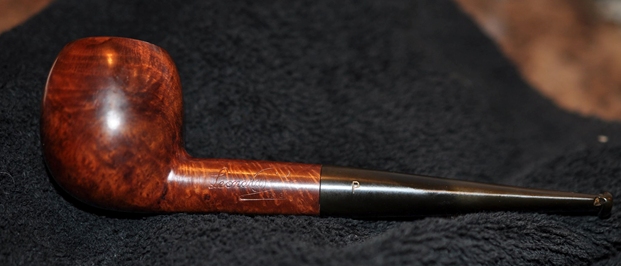
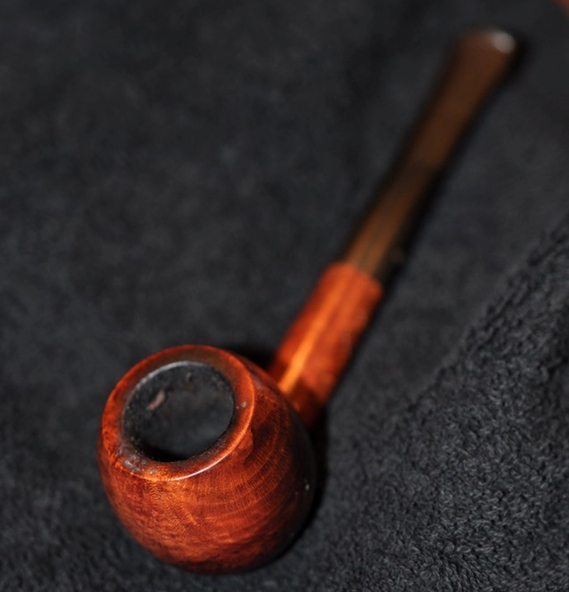 Jeff took photos of the rim top and bowl to show its condition. The rim top was covered with a coat of thick lava that overflowed the bowl. It was primarily on the front side of the bowl. The bowl itself had a thick cake with flecks of tobacco stuck in the cake on the sides.
Jeff took photos of the rim top and bowl to show its condition. The rim top was covered with a coat of thick lava that overflowed the bowl. It was primarily on the front side of the bowl. The bowl itself had a thick cake with flecks of tobacco stuck in the cake on the sides.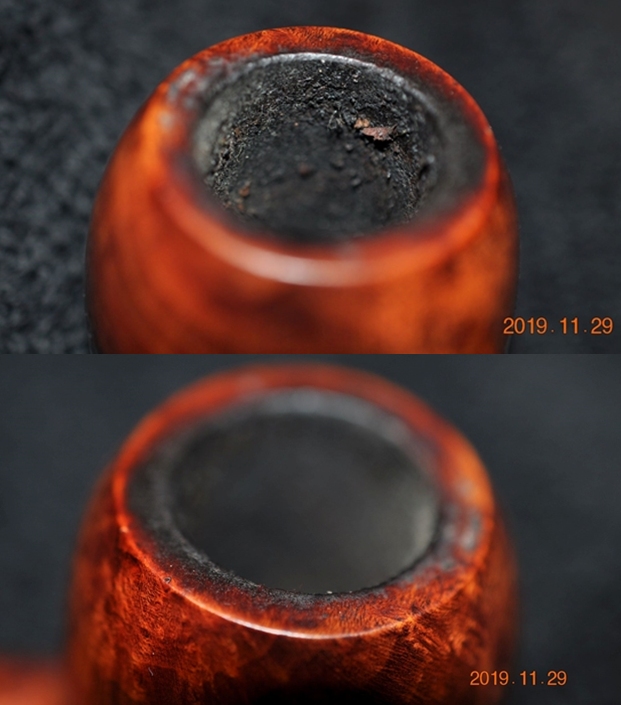
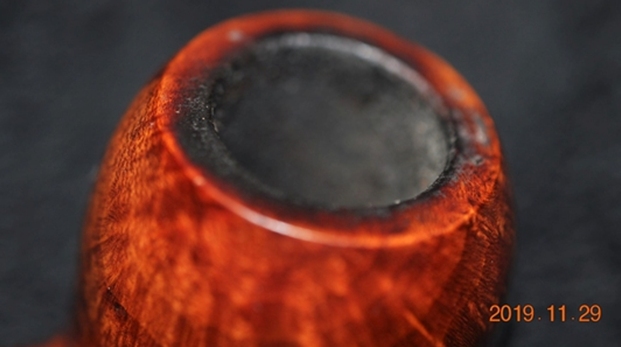 Jeff took photos of the sides of the bowl to give a better feel for the beautiful grain around the sides and heel of the bowl. It is truly a beautiful pipe.
Jeff took photos of the sides of the bowl to give a better feel for the beautiful grain around the sides and heel of the bowl. It is truly a beautiful pipe.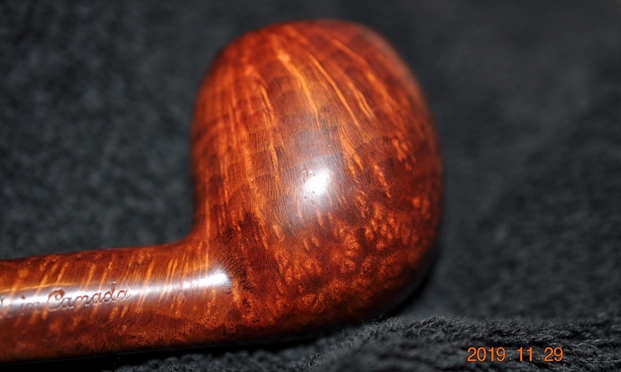
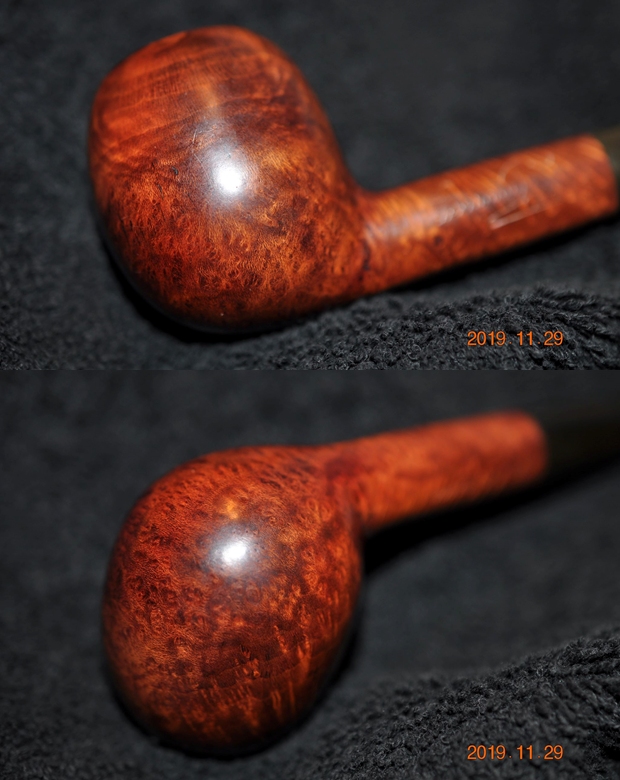 He took a photo of the left and right sides of the shank. The stamping is clear and reads as noted above. The tapered stem has a capital ‘P” on the left side.
He took a photo of the left and right sides of the shank. The stamping is clear and reads as noted above. The tapered stem has a capital ‘P” on the left side. The stem was lightly oxidized and seemed to be high quality vulcanite. There were no tooth marks or chatter which was unusual for Bob’s pipes. It is a unique stem in that there was an airway exiting on both sides of the stem at the button. The main slot on the button end was an oval hole so in essence the stem seemed to introduce air from the sides to the main airway to deliver a cool smoke.
The stem was lightly oxidized and seemed to be high quality vulcanite. There were no tooth marks or chatter which was unusual for Bob’s pipes. It is a unique stem in that there was an airway exiting on both sides of the stem at the button. The main slot on the button end was an oval hole so in essence the stem seemed to introduce air from the sides to the main airway to deliver a cool smoke. 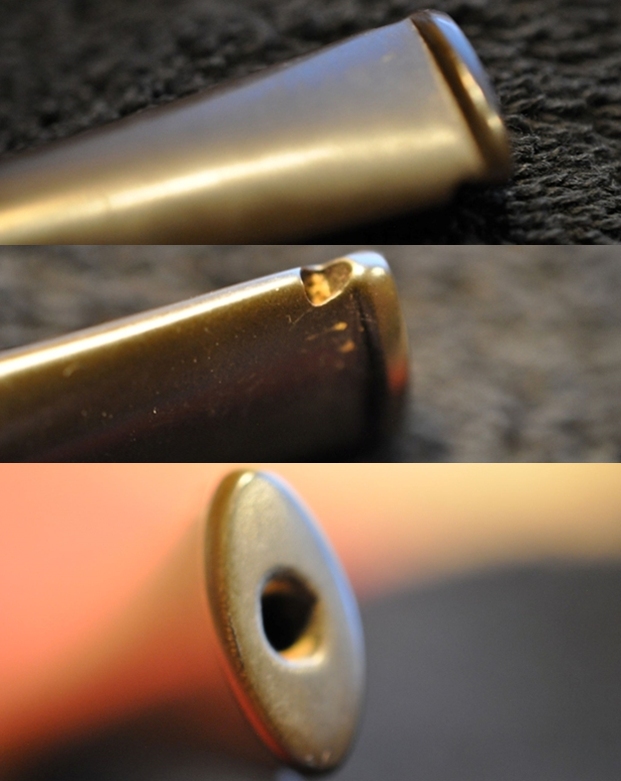 I turned to a previous blog that I had written on the first Leonard Payne pipe that I worked on to gather the information on the brand and remind myself of the background of this pipe. Here is the link (https://rebornpipes.com/2013/11/16/a-pipe-maker-i-had-never-heard-of-leonard-payne-pipes/). I quote the pertinent parts of that blog below:
I turned to a previous blog that I had written on the first Leonard Payne pipe that I worked on to gather the information on the brand and remind myself of the background of this pipe. Here is the link (https://rebornpipes.com/2013/11/16/a-pipe-maker-i-had-never-heard-of-leonard-payne-pipes/). I quote the pertinent parts of that blog below:
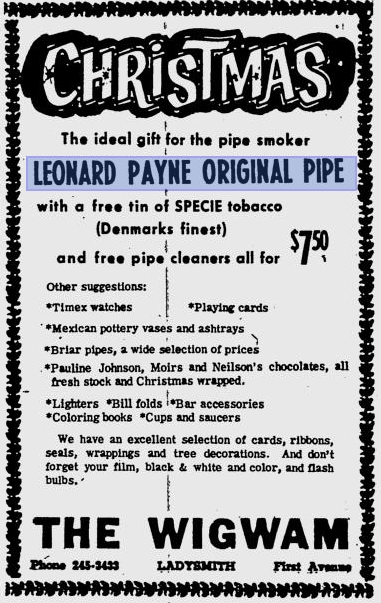 The stamping was Leonard Payne on the left side of the shank and Made in Canada on the right side. The stem bears a green dot in the centre of a white circle on the left side of the stem. I decided to do a bit of research on the web and found the following advertisement that highlighted the pipes. Further digging with Google came up with this short note from alt.smokers.pipes forum. It was written by Mike Glukler of Briar Blues. I quote it below in full. (https://groups.google.com/forum/#!topic/alt.smokers.pipes/RrICLiVgE2o) “Leonard Payne was based in B.C. for many years. He came to Canada from England. He had shops in Surrey, B.C. and Kelowna, B.C.Interesting fellow. Gruff as the day is long. When you bought a pipe it was handed to you in a paper bag. No sock, no box. Most of his pipes carried a “carburetor” system at the shank / stem junction.Another Payne idea was his shanks. Almost all his pipes were two pieces. He’d turn the bowl and shank, then cut off the shank and reattach with glue (not always with the same piece of briar, so many did not match grains). His thinking was that the shank being the weakest link, if cut and glued would never break and thus “correcting”the weakest link.You may find his pipes on E-Bay on occasion listed as a Len Cayne. The P in his stamping looks more like a fancy upper case C.”
The stamping was Leonard Payne on the left side of the shank and Made in Canada on the right side. The stem bears a green dot in the centre of a white circle on the left side of the stem. I decided to do a bit of research on the web and found the following advertisement that highlighted the pipes. Further digging with Google came up with this short note from alt.smokers.pipes forum. It was written by Mike Glukler of Briar Blues. I quote it below in full. (https://groups.google.com/forum/#!topic/alt.smokers.pipes/RrICLiVgE2o) “Leonard Payne was based in B.C. for many years. He came to Canada from England. He had shops in Surrey, B.C. and Kelowna, B.C.Interesting fellow. Gruff as the day is long. When you bought a pipe it was handed to you in a paper bag. No sock, no box. Most of his pipes carried a “carburetor” system at the shank / stem junction.Another Payne idea was his shanks. Almost all his pipes were two pieces. He’d turn the bowl and shank, then cut off the shank and reattach with glue (not always with the same piece of briar, so many did not match grains). His thinking was that the shank being the weakest link, if cut and glued would never break and thus “correcting”the weakest link.You may find his pipes on E-Bay on occasion listed as a Len Cayne. The P in his stamping looks more like a fancy upper case C.”
Turning now to the restoration of this beautifully grained Leonard Payne smooth apple. Jeff cleaned this filthy pipe with his usual penchant for thoroughness that I really appreciate. This one was a real mess and I was looking forward to seeing what he had done with this one when I took it out of his box. It looked amazing and CLEAN and other than the stem work needing very little effort on my part. He reamed it with a PipNet pipe reamer and cleaned up the reaming with a Savinelli Fitsall Pipe Knife. He scrubbed out the internals with alcohol, pipe cleaners and cotton swabs until the pipe was clean. He scrubbed the exterior of the bowl with Murphy’s Oil Soap and a tooth brush to remove the grime and grit on the briar and the lava on the rim top. The finish looks good with great looking grain around the bowl and shank. The rim top and front of the bowl was severely damaged with burns. The condition of the inner and outer edges was rough. The stem looked a lot better but damage was evident on the button. Jeff soaked the stem in Before & After Deoxidizer to remove the oxidation on the rubber. The pipe was ready for me to carry on the next part of the process. 
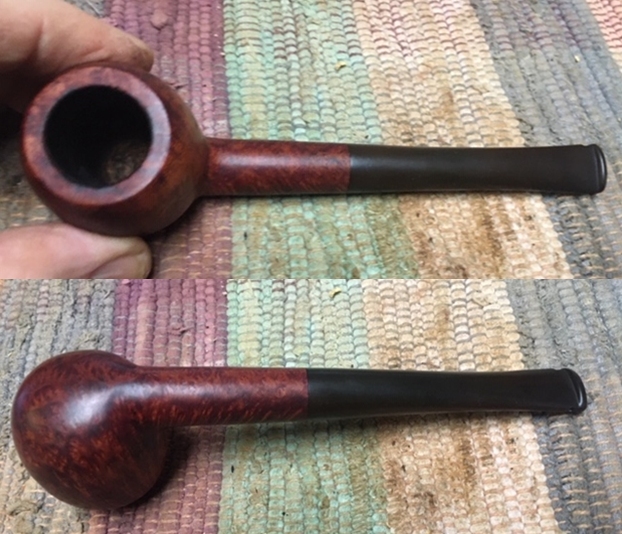 I took some close up photos of the rim top and also of the stem surface. I wanted to show how well it had cleaned up. The rim top was clean and undamaged. The inner edge had some damage that left it rough and slightly out of round. The outer edge of the bowl looked good. I also took close up photos of the stem to show the tooth marks on the stem and the button surface. The last photo shows the twin bore stem with the twin airways coming out in the button.
I took some close up photos of the rim top and also of the stem surface. I wanted to show how well it had cleaned up. The rim top was clean and undamaged. The inner edge had some damage that left it rough and slightly out of round. The outer edge of the bowl looked good. I also took close up photos of the stem to show the tooth marks on the stem and the button surface. The last photo shows the twin bore stem with the twin airways coming out in the button.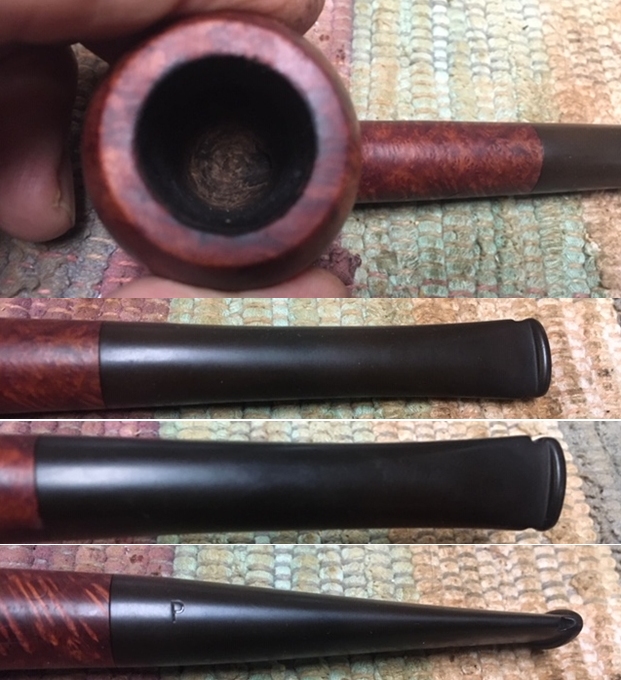 I took a photo of the stamping on the sides of the shank. It reads Leonard Payne with a curled L and P and under that is stamped Original. There is a P stamped on the left side of the taper. The right side of the shank reads Made in Canada.
I took a photo of the stamping on the sides of the shank. It reads Leonard Payne with a curled L and P and under that is stamped Original. There is a P stamped on the left side of the taper. The right side of the shank reads Made in Canada.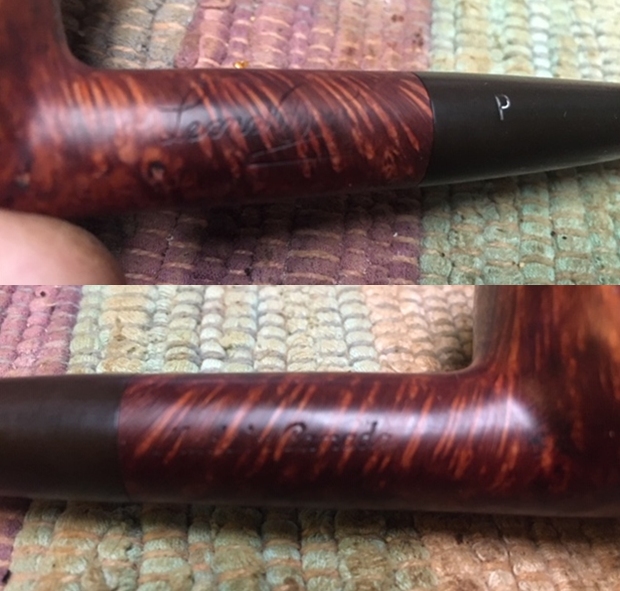 I decided to start my restoration work on this one by dealing with the rough inner edge of the bowl. The rest of the pipe looked very good and some polishing would give it some depth and life. I used a folded piece of 220 grit sandpaper to give the inner edge a light bevel and bring the bowl back to round.
I decided to start my restoration work on this one by dealing with the rough inner edge of the bowl. The rest of the pipe looked very good and some polishing would give it some depth and life. I used a folded piece of 220 grit sandpaper to give the inner edge a light bevel and bring the bowl back to round. I wet sanded with 1500-12000 grit micromesh sanding pads to polish the bowl. I wiped the bowl down after each pad with a damp cloth to remove the dust and debris from sanding.
I wet sanded with 1500-12000 grit micromesh sanding pads to polish the bowl. I wiped the bowl down after each pad with a damp cloth to remove the dust and debris from sanding.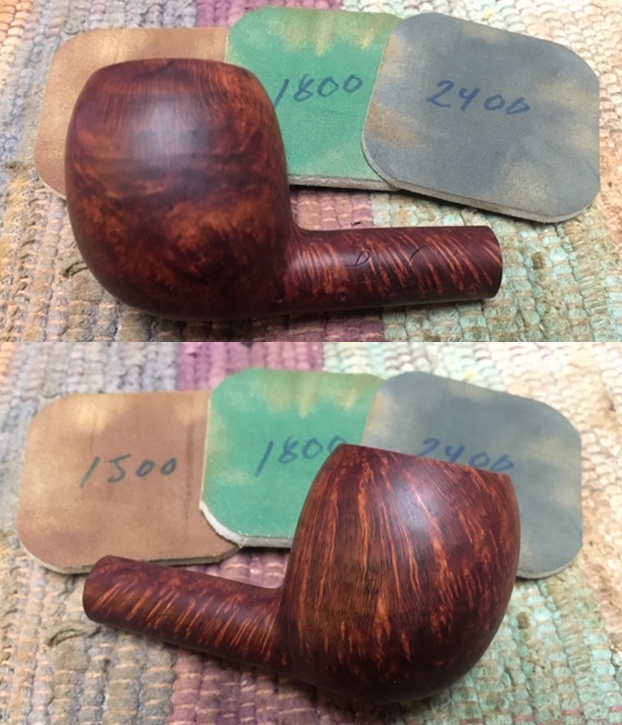
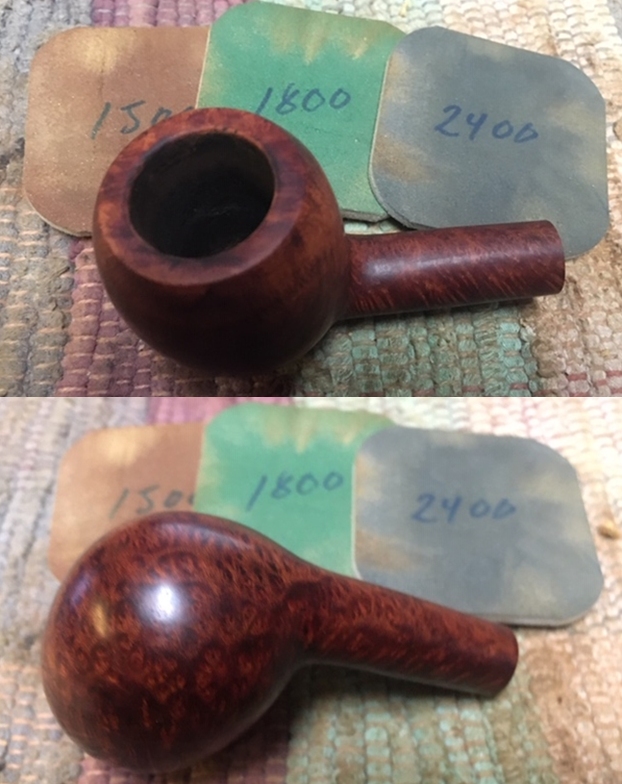
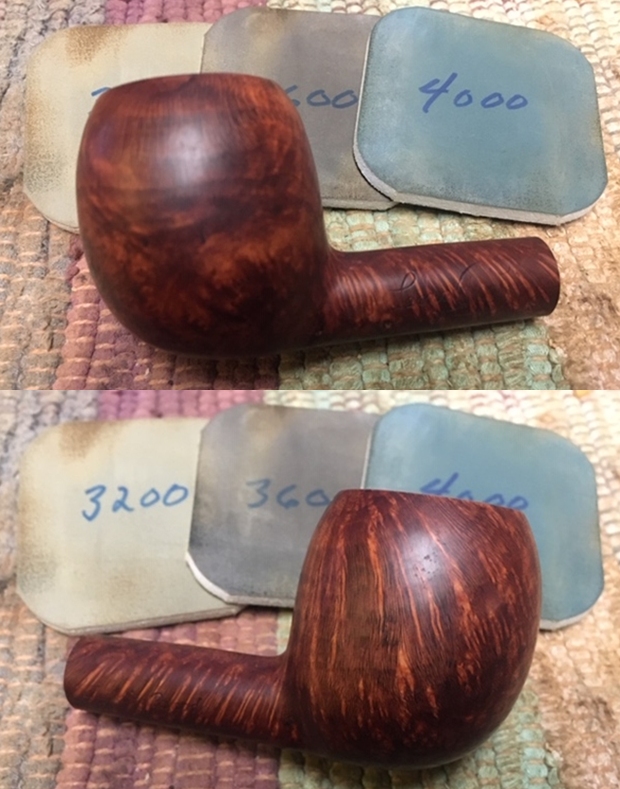
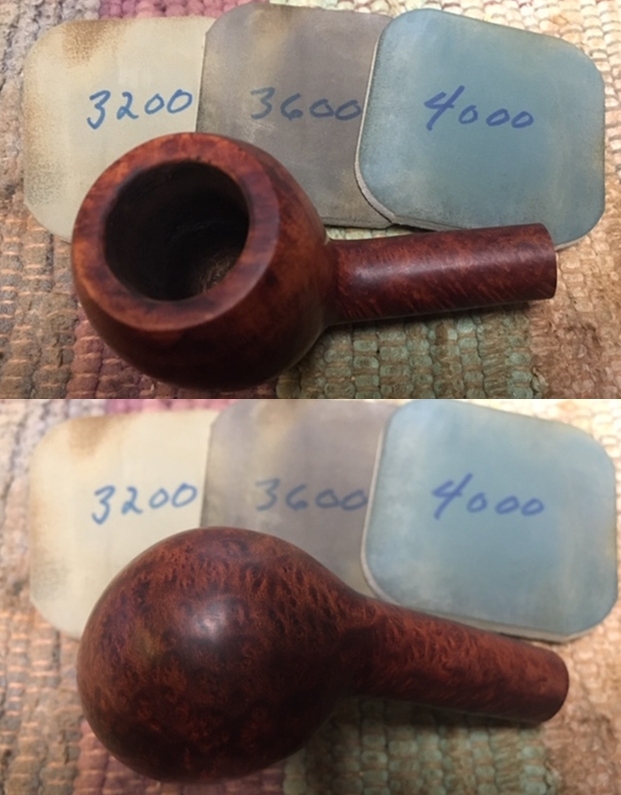
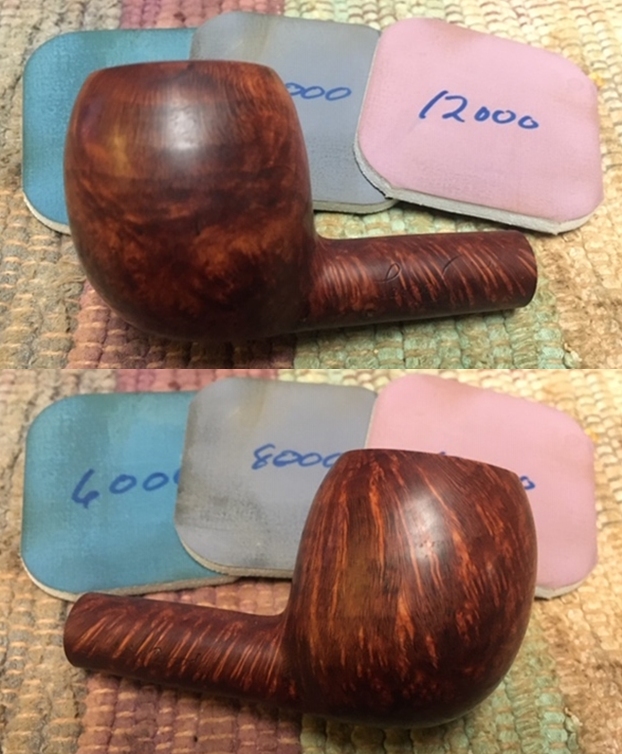
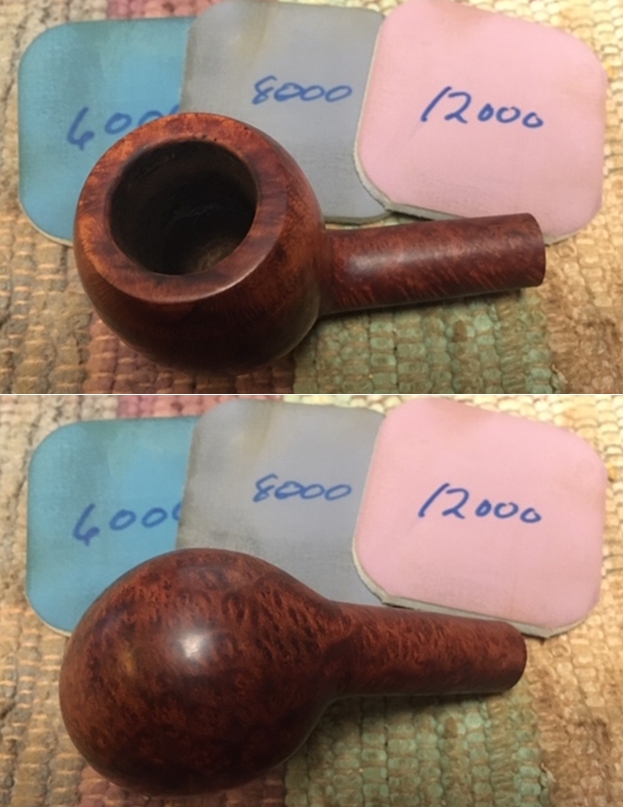 I worked some Before & After Restoration Balm into the surface of the briar with my fingertips to get it deep in the briar. The product works to clean, enliven and protect the briar. I let the balm sit for a little while and then buffed with a cotton cloth to raise the shine. The photos show the bowl at this point in the restoration process.
I worked some Before & After Restoration Balm into the surface of the briar with my fingertips to get it deep in the briar. The product works to clean, enliven and protect the briar. I let the balm sit for a little while and then buffed with a cotton cloth to raise the shine. The photos show the bowl at this point in the restoration process.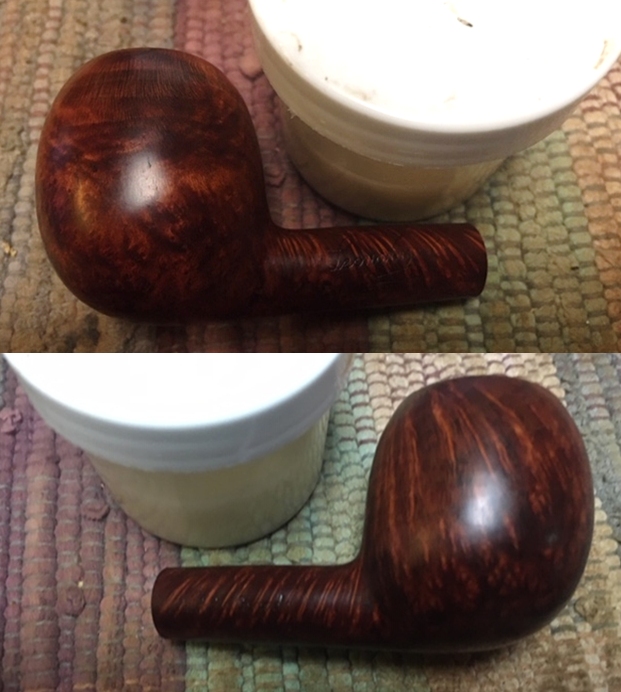
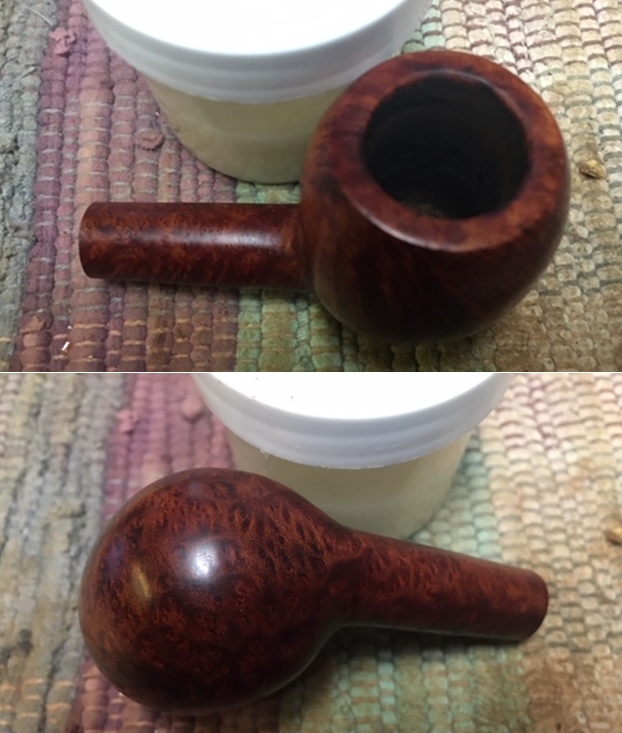
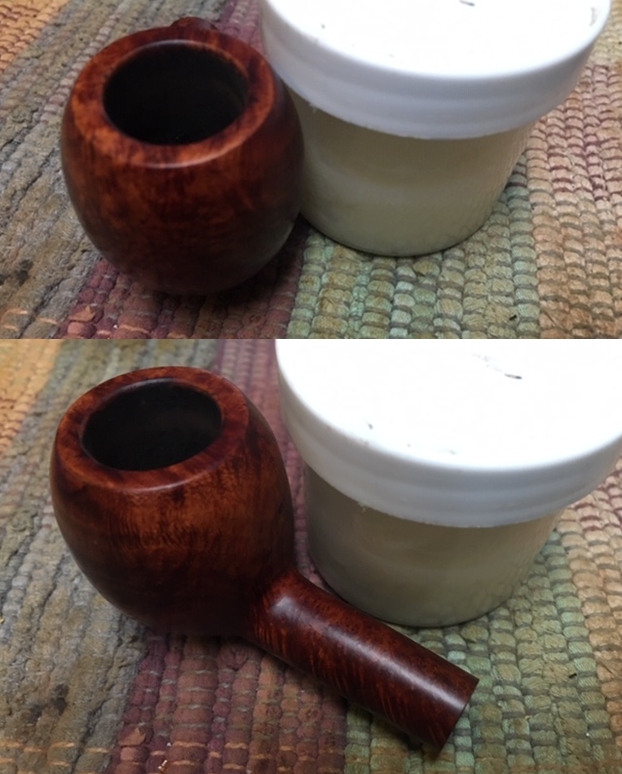 I set the bowl aside and turned my attention to the stem. I sanded both sides of the stem with 220 grit sandpaper to remove the remaining oxidation. I followed that by sanding them with a folded piece of 400 grit wet dry sandpaper to begin the polishing.
I set the bowl aside and turned my attention to the stem. I sanded both sides of the stem with 220 grit sandpaper to remove the remaining oxidation. I followed that by sanding them with a folded piece of 400 grit wet dry sandpaper to begin the polishing.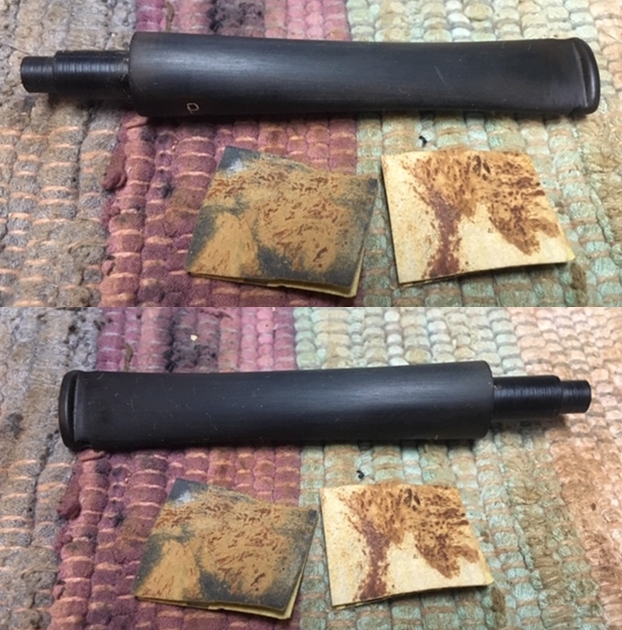 I polished the stem with micromesh sanding pads – wet sanding it with 1500-12000 grit pads. I polished it further with Before & After Pipe Stem Polish – both fine and extra fine. I wiped the stem down with Briarville’s No Oxy Oil to preserve and protect the stem.
I polished the stem with micromesh sanding pads – wet sanding it with 1500-12000 grit pads. I polished it further with Before & After Pipe Stem Polish – both fine and extra fine. I wiped the stem down with Briarville’s No Oxy Oil to preserve and protect the stem.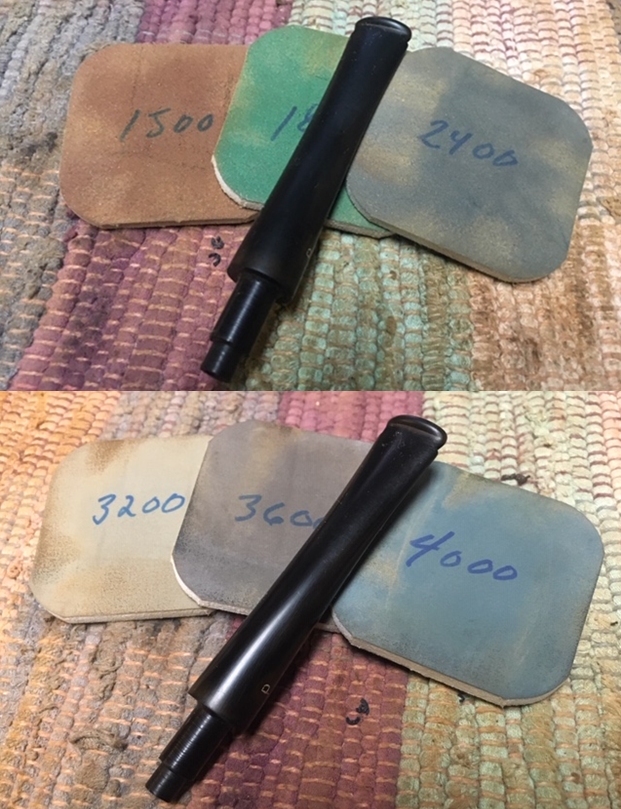
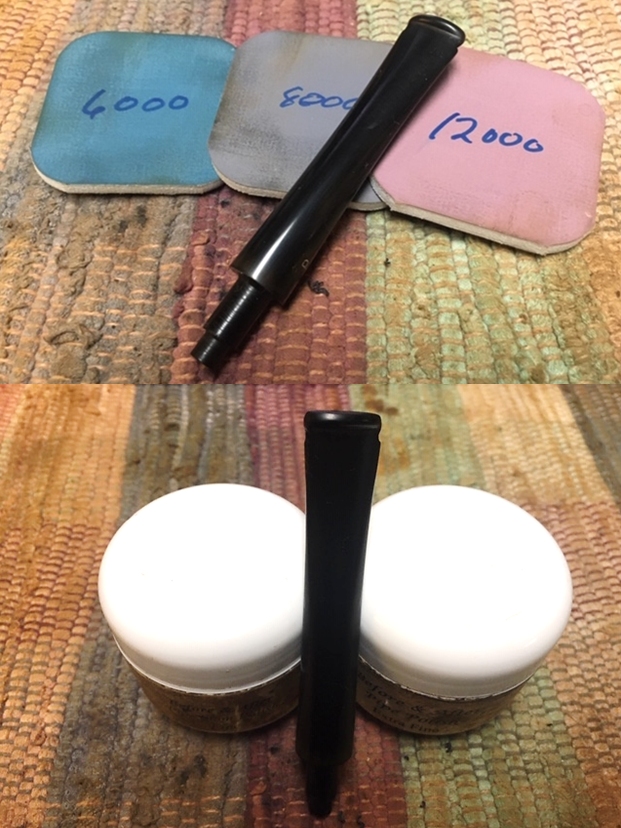
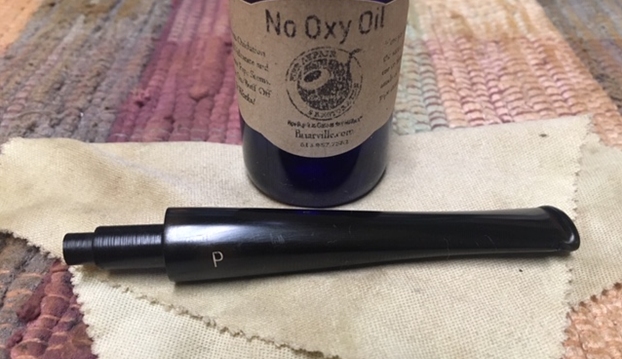 I am so glad that I went back to work on a pipe that Jeff had cleaned up for me. It certainly makes things go faster and easier for me. I put the stem back on the bowl and polished the bowl and stem with Blue Diamond polish on the buffing wheel. I gave the bowl and the stem multiple coats of carnauba wax. I buffed the pipe with a clean buffing pad to raise the shine. I hand buffed it with a microfiber cloth to deepen the shine. The bowl looks really good. The contrast between the browns of the briar and the polished black vulcanite stem work very well. The pipe feels great in my hand and I am sure that it will feel even better radiating the heat of a good smoke. It must have been a fine smoking pipe judging from the condition it was in when I received it from Bob’s estate. Have a look at it with the finished photos below. The dimensions are Length: 6 inches, Height: 1 ¾ inches, Outside diameter of the bowl: 1 ¼ inches, Chamber diameter: ¾ of an inch. A fellow in Eastern Canada sent me a message on Facebook saying he was looking for a Leonard Payne pipe and wondering if I had one. This was one of those times when I could say YES. I am looking forward to what he thinks of his “new” pipe. I think he will enjoy it for many years to come and perhaps it will pass to the next pipeman who will hold it in trust. Thanks to each of you who are reading this blog.
I am so glad that I went back to work on a pipe that Jeff had cleaned up for me. It certainly makes things go faster and easier for me. I put the stem back on the bowl and polished the bowl and stem with Blue Diamond polish on the buffing wheel. I gave the bowl and the stem multiple coats of carnauba wax. I buffed the pipe with a clean buffing pad to raise the shine. I hand buffed it with a microfiber cloth to deepen the shine. The bowl looks really good. The contrast between the browns of the briar and the polished black vulcanite stem work very well. The pipe feels great in my hand and I am sure that it will feel even better radiating the heat of a good smoke. It must have been a fine smoking pipe judging from the condition it was in when I received it from Bob’s estate. Have a look at it with the finished photos below. The dimensions are Length: 6 inches, Height: 1 ¾ inches, Outside diameter of the bowl: 1 ¼ inches, Chamber diameter: ¾ of an inch. A fellow in Eastern Canada sent me a message on Facebook saying he was looking for a Leonard Payne pipe and wondering if I had one. This was one of those times when I could say YES. I am looking forward to what he thinks of his “new” pipe. I think he will enjoy it for many years to come and perhaps it will pass to the next pipeman who will hold it in trust. Thanks to each of you who are reading this blog.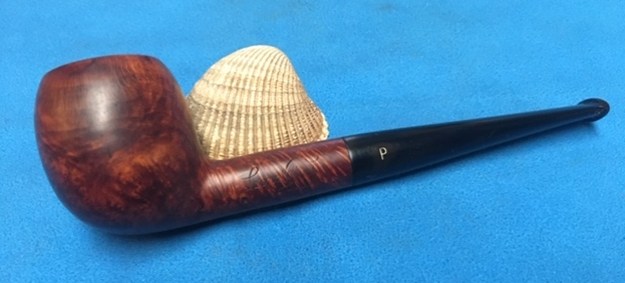
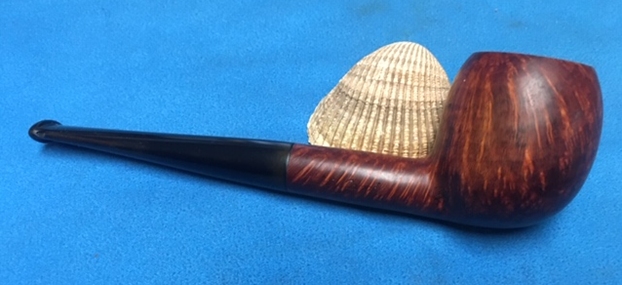
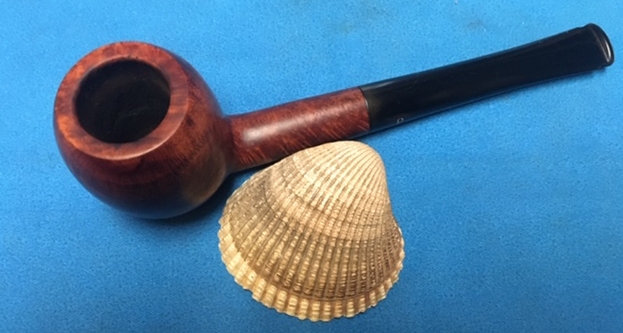

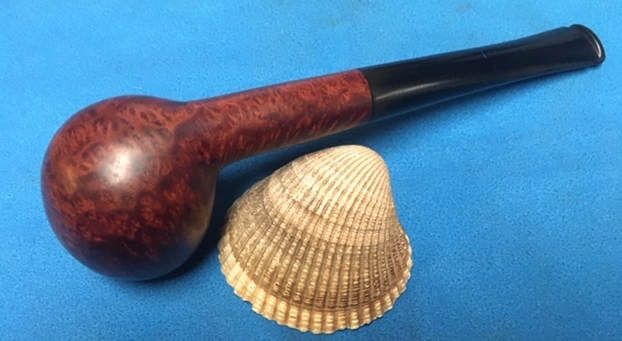
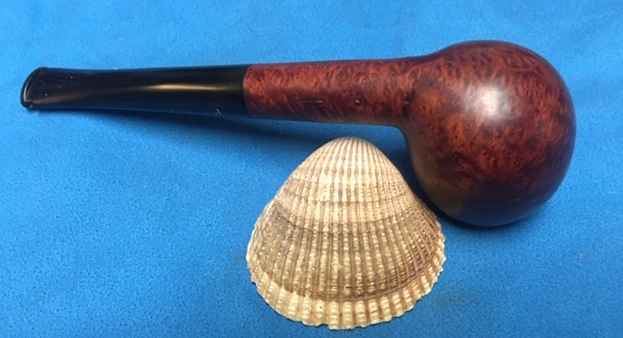
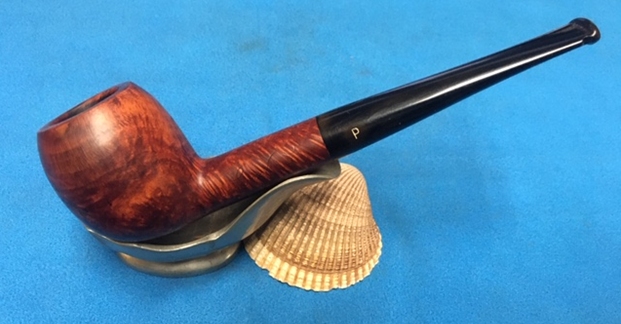
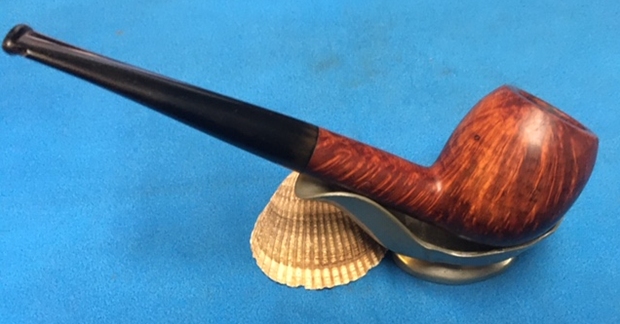
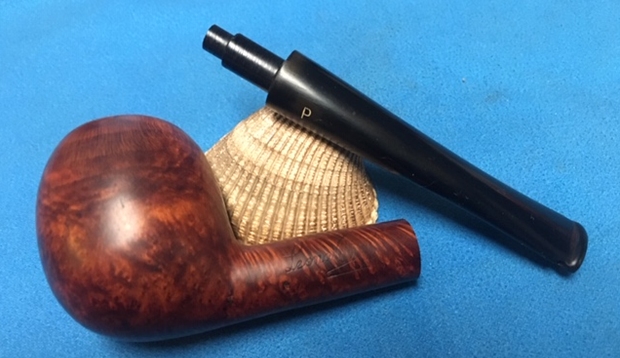
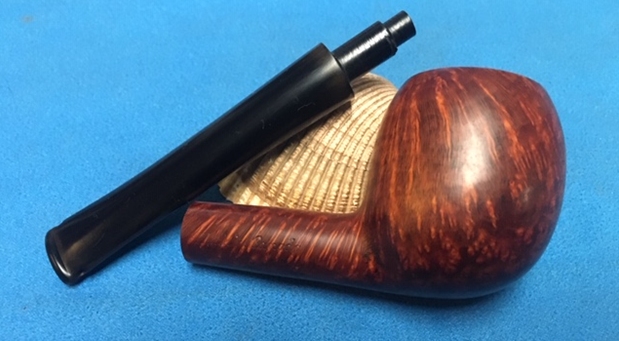
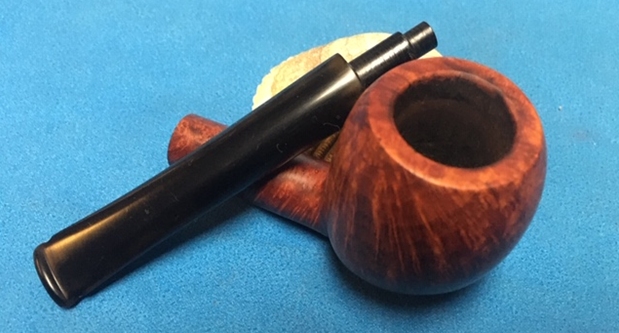
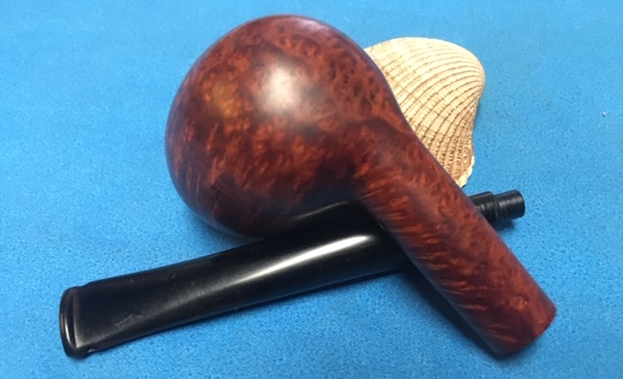
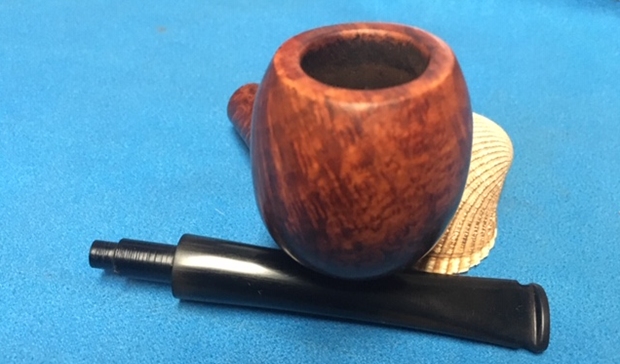
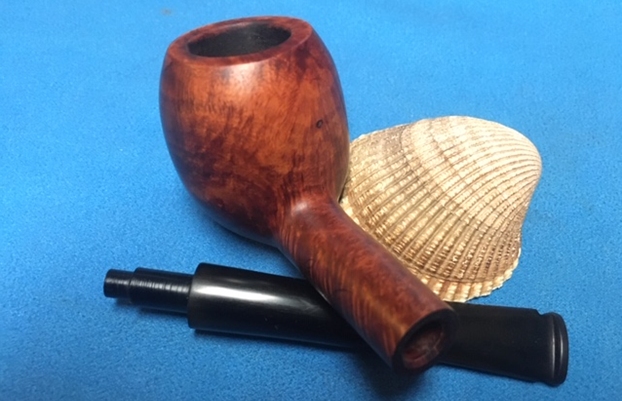

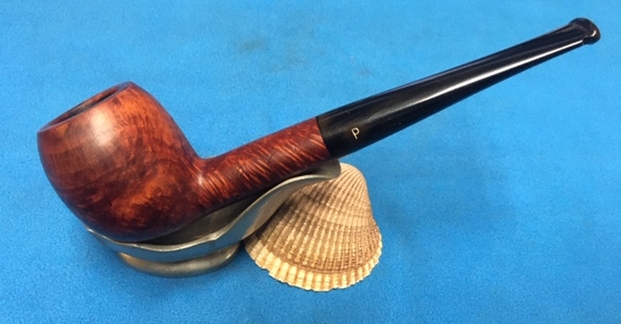
Steve, do you have a link or do you describe Jeff’s cleaning technique in detail? He does great work and I’d like to copy it for my own pipes.
LikeLike
I will see if I can get him to write up his process for me.
LikeLike
Jack, Jeff sent me a detailed explanation of his cleaning process/technique. I just posted the blog on it! Give it a read.
LikeLike
Thank you! I’ll read it on my way to work this morning.
LikeLike